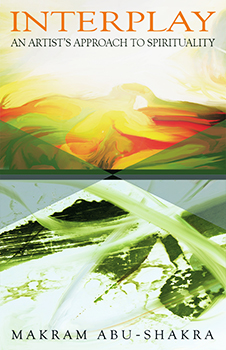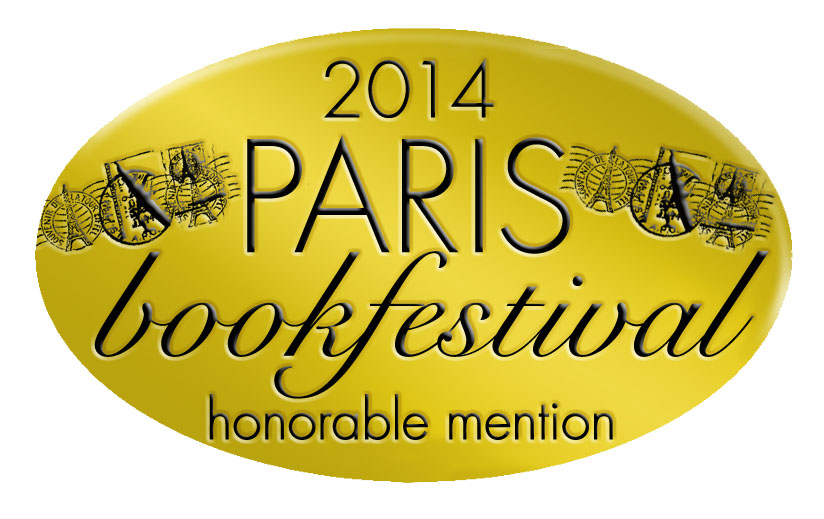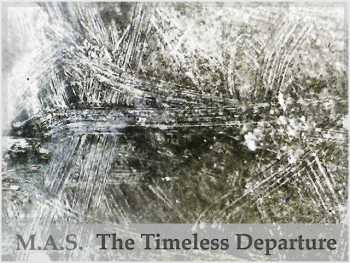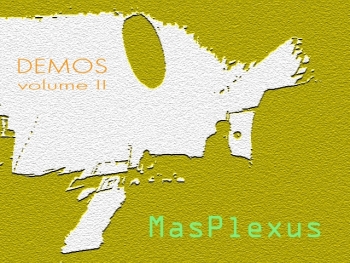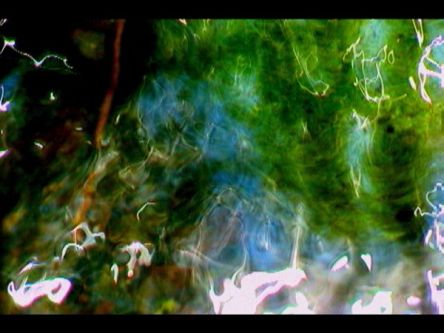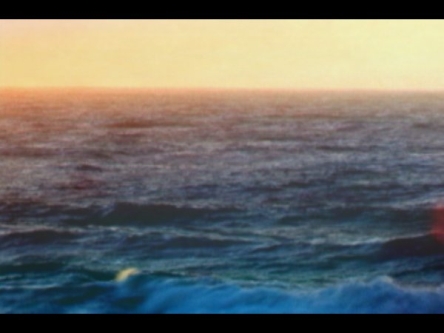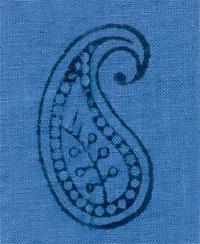1 Year Anniversary Recap - Part I ended with a discussion of the EGG Project (also called the Global Consciousness Project) which I wrote about in detail in Synchronicity Clusters and Warping the Existential Matrix. The numerical data recorded by the random event generators can be visually represented as a bunch of dots in a given space. The ongoing experiment demonstrates that the dots are normally distributed uniformly, which is to be expected from random data, but that statistically improbable clusters (or correlations) form when world-wide events occur which cause a large percentage of the world's population to share focus, emotions, and intention. This finding suggests that global consciousness has an effect on reality beyond what is commonly known or accepted.
If one were to visualize the actual events in our personal (or collective) lives in a similar fashion, as dots in a given space, then we have what can be called the "existential matrix". These events, or existential dots, are not necessarily random for they are the products of our conscious decisions, habits, social norms, the physical laws of our universe, etc. But, if we remove all these factors which influence what we experience, there is typically very little evidence that an underlying order exists which gives our lives a deeper meaning or a higher level purpose. The events in our lives might just as well be considered random and uniformly distributed across an existential matrix.
When synchronicities occur, however, we have sudden insight into an underlying order, an order that may seem to possess a philosophical or metaphysical intelligence. A group of events, or existential dots, which in logical terms are entirely disconnected suddenly function synchronously as a group; the coincidence is so meaningful that it cannot be ignored. This is an unprecedented warp in the existential matrix. And when we experience this, we are naturally inclined to ask the question: When, how, and why do synchronicities occur?
One can ideate that one of the essential reasons behind the occurrence of synchronicities is the focus of our attention, just as focus is evidently one of the possible reasons behind the skewing of the random numbers in the EGG Project. On the other hand, one could argue that if this were true, then we should be experiencing synchronicities in a very predictable manner; whenever we focus upon something, a meaningful coincidence should occur. This is not commonly the case, however, or at least not obviously so. Indeed, the frequency and nature of synchronicities is very difficult to pinpoint, very hard to predict.
A couple weeks ago, while I was working on this post, I wrote that synchronicities occur most frequently for me when I am focused upon some aspect of my evolution, or when the current events in my life are crucial to my development. In contrast, my job, for instance, makes me focus on very mundane aspects of reality throughout the day, and it is very rare that a synchronicity occurs related to work. Thus, I thought that it was only the focus upon evolutionary matters which results in synchronicities.
Since writing down these ideas, however, life has proven me wrong. (That life would show me evidence to the contrary was itself a synchronistic event, and this happens quite often whenever I am about to publish ideas online that still require balancing.) There was a problem at work that was very difficult to solve and it funneled in my attention to the maximum degree so that even my dreams became involved. As a result of this intense amount of focus, I experienced a number of synchronicities, the most blatant of which had to do with how closely the events seemed to coincide with the stock market crash and Lehman Brothers going under; our dealings with the client who experienced the problem seemed to closely mirror the news of the market after-effects over the days. [09/28/08: The troubles at work persisted this week until Thursday. Only five minutes after reading the first news headline on the internet that spoke positively about the market's situation, our client called and we were able to overcome the technical difficulty with our software that he'd been experiencing.]
I still believe it's true that I experience much less synchronicities while I am at work but I believe this to be because the degree of focus is limited; generally I am only paying attention with my intellect and not with my entire being, unlike when I am involved in aspects of my evolution that interest me on a profound level. Thus, to achieve the level of focus that actually warps the existential matrix, one must involve more than just intellectual focus, but the emotions and the deeper levels of self as well. The various aspects of self must be in congruence and regularized to point in a single direction. In other words, a black hole in consciousness must be materialized.
Even when our entire attention is indeed funneled into one focus, however, the synchronicities are not always blatant because we may not recognize the underlying order behind life's events. This is especially the case when we are not familiar or mature with the subject at hand, not only because the underlying order makes little sense but also because our initial endeavor to understand the subject invites the exploration of widely varying perspectives. My first post, Synchronistic Conditioning and an Emerging Portrait of Vitality, illuminates the yin and yang oscillations which occur in dreams/syncrhonicities/ideas as a result of focusing upon an aspect of life about which we have little understanding, and little sense of equilibrium or balance. The synchronistic data, so to speak, seemingly illuminate opposing or antagonistic proclivities; the messages behind dreams and the "signs" behind the syncrhonicities seem contradictory. Only as we progress do the dreams and synchronicities become more obvious and orderly; life begins to shed its sense of randomness and arbitrariness.
As I've written already, one pictorial representation of our progress is the paisley pattern because it begins wide at the bottom and narrows towards the top. The essential form of the paisley pattern is really a triangle (or pyramid or cone), whose apex is located just before the twirl begins at the top. (I have preferred referring to the paisley pattern over a simple triangle because after an enlightened degree of balance is achieved at the apex, movement in the twirling section, which can be described as a recursive refinement, is no longer random but seems to adhere to strict archetypal patterns, or a form of cosmic thinking.)
The triangle is a common symbol which depicts the sacred concept of Trinity; it can also depict the reconciliation of opposites, or the coincidence of opposites (Coincidentia Oppositorium), a concept which is generally regarded as an essential aspect of many religious and mystical traditions. Similarly, the space-time fabric surrounding a black hole is cone-shaped, which is a 3-D version of a triangle. Whether we are speaking of a Coincidentia Oppositorium or a black hole, the triangle implies the coming together at the apex of two (or in the case of a black hole, any number of) separate components at the base. In mysticism, this is the convergence/collapse/synthesis of a duality into unity. In astrophysics, the black hole is an inescapable gravity well which pulls all objects into a point of singularity. My argument is that both the black hole phenomenon and the unification-based evolutionary process are derivatives of the same archetypal pattern and one discipline, namely science, can illuminate the other, namely mysticism, and vice versa.
When mystics speak of their feelings of at-one-ment with the world, it is this unification at the apex of the triangle which they are experiencing. Polarities are compacted and all is seen and felt as one. When mystics speak of unconditional love and compassion, they are referring to the necessary reconciliation of opposites that occurs archetypaly during enlightenment, which when translated into social/cultural/personal relations is that which brings all together in peace, harmony and love, unconditionally. When mystics speak of the importance of selflessness, they speak of the inability to reconcile the opposites due to the ego, which accepts this or that, not this and that.
In black hole terms, an object is ripped apart as it reaches the center of a black hole. And so the ego is the psychological equivalent of mass which blocks one's entry into the apex. In The Dimunitive Staircase, I wrote about a dream which a friend of mine had that illuminated in simple terms the inability of the ego to approach the apex of a Coincidentia Oppositorium. It simply depicted him going up a spiraling staircase which ended up wedged between two walls so that, due to the size of his body, it was impossible for him to proceed. He had this dream before I discussed with him any of these ideas which highlights the archetypal nature of this phenomenon.
In my past, long before thinking of black holes and their parallel concepts in psychology/spirituality, it was quite common for me, especially while seeking inspiration or simply a higher state of mind, to go through rather painful states of mind in which I felt myself being squeezed down to the size of a pea, psychologically speaking, best described as a form of regression back to childhood. After this process of diminution I would often feel myself slipping through some kind of tiny portal and suddenly find myself in a higher state of mind.
Conversely, many people have experienced firsthand the often devastating drop in spirits after temporarily soaring during a higher state of mind. In fact, I experienced this yesterday. While I was in a very inspired, selfless state, I had a phone conversation with someone which manifested a little anger within me. All of a sudden a high pitched anxiety flooded my system which left me breathless, an anxiety whose intensity I rarely experience while in a mundane state.
Anger itself is an inchoate, entropy-inducing form of energy (in contrast to how unconditional love can generate a higher order) and the tiniest focus upon this energy could swiftly secure a collapse from the heights. But, the experience can also be interpreted as my having quickly oscillated from a state of selflessness to that which was ego-driven due to the feeling of being threatened by the phone conversation to lose my higher state of mind. In black hole terms, it would be the equivalent of changing from a wave of light, selfless/massless, that is near the center of the black hole which suddenly manifests mass/ego and thus gets ripped apart.
I began hallucinating the "X" several years after first having the diminution experiences, the "X" being two triangles on top of each other. The middle of the "X" depicted a passageway that would lead from the bottom triangle up to a higher state of mind. The "X" also represents the space-time warpage of a black hole leading to a white hole.
If we accept as true that focusing with a high degree of intensity on an aspect of our lives materializes a trinity-like evolutionary path that resembles the attributes of a black hole, then there are two arguments which are implied:
1) Intense focus upon any aspect of life will automatically drive one towards a collapse of the duality or set of dualities involved. This is not to say that to follow through with this reconciliation into unity is inevitable with sustained focus, for it is typical that the ego or an arbitrary bias that has fixated will block the path towards this coincidence of opposites. But, in general, this spells out that all evolutionary paths ultimately lead to unity.
2) Intense focus on any aspect of life can lead to enlightenment, or at least a state of mind which transcends the mundane. This, I believe, is already a claim that many mystics make for enlightenment can occur under any circumstance. This would also suggest that all black holes lead to white holes. (Note that the existence white holes on the other side of black holes have not been proven, though I have read that they are "mathematically possible" according to some scientists.)
It is interesting to note that writing this very blog began, over the months, to develop the tension of opposites trying to converge when I started to introduce fiction into my writing style. The philosophical style of writing, which attempts to maximize clarity and illumination, is in direct contrast to my usual fiction style, which is naturally imbued in enigma and ambiguity.
I began writing fiction when I started writing the post about Kafka, Kafka, Enigma, and Mysticism. The difficulties of describing Kafka philosophically effectively gave birth (or rebirth) to the fiction writer that had been lying dormant within me since this blog was launched. Logic Dies, I am Sorry was a story written as a result of my failed philosophical writing efforts. The story tells of a "sphere of noise" that was rapidly approaching the main character, a lecturer, in order to consume him and silence his speech.
As the months passed, I kept oscillating between both styles of writing, which was an intriguing way to write and relatively easy to do while I was in an inspired state of mind, since this duality was relatively compact. But, it became increasingly difficult as my social/family/work life began to consume more and more of my free time. My inspired states became less accessible and during my more mundane states, I am naturally more ego-driven. As various aspects of my ego, the poet (fiction writer) and the philosopher are completely at odds with each other.
The poet wields the scepter of numinosity. With the ability to potentiate an uprooting of one's ordinary perception of reality in a relatively direct fashion, the poet as an ego feels superior to the philosopher who although can inspire and energize through ideas lacks the ability to affect a significant shift in consciousness in the same direct fashion. The philosopher, on the other hand, engrossed in the pursuit of truth and clarity, scoffs at the chimerical qualities of the poet's expression. The two, in short, as egos are incongruent while in the midst of their actions.
Had the duality remained comfortably compact, the resulting style of writing is what I would call "holographic literature", where each idea is presented more than once, each time from a different perspective and a different writing style. This is still my aim for this blog, but I've realized how difficult it is to do unless life affords me more frequent access to the heights, as in the past.
As is apparent with the frequency of my posts in the recent past, my writing productivity towards the end was grinding down to a halt, curiously like one would enter a state of timelessness as one approached a black hole. The final story was The Freedom of Wings and the Invisible Tides, the main character: The Ever Receding Man.
Coming up soon: Three essays in the works, as well as a short story about a shape-shifter, an upper-X character.
Showing posts with label kafka. Show all posts
Showing posts with label kafka. Show all posts
Sunday, September 21, 2008
Sunday, June 1, 2008
Kafka, Enigma, and Mysticism
Those who have embarked on a spiritual path may or may not recognize specific individuals who have helped them jump start their inner adventure. My early spirituality was not at all influenced by Eastern philosophy or New Age writings, at least not directly. Instead, it was solidly rooted in the realm of modern art, music, and literature, with the idea firmly planted within me from a young age that I will be climbing up "the other side of the mountain."
My first spiritual guru was not a figure like Krishnamurti or the Buddha; it was Franz Kafka. He was what I would call one of the godfathers of enigma craftsmanship. Some of my earliest and most memorable altered states of consciousness came as a result of dream-wading my way through the mystery corridors of his writing. The enigmas he presented, coupled with the sense of purity and human warmth in his writing - or perhaps just his highlighting the beautiful and mysterious aspects of being human and accentuating them to the nth degree - opened doors that eventually led me down the path towards my mystical experiences.
Since Kafka's time, there have been quite a number of artists of many mediums that focused on the enigmatic side of creativity. Names such as Harold Pinter, David Lynch, the Brothers Quay, and Francis Bacon are but a few. One can argue that they've gone to far greater lengths than Kafka in this regard. And yet, as is usually the case, the early pioneers of a specific style or genre tend to breathe an unusually strong sense of life into it, with a purity that remains memorable and worthy of exploration throughout many generations.
To be profoundly moved by a mystery which can neither be explained nor scrutinized by the intellect, this is the proper form of an enigma. Some enigmas point to insights which lie just beyond the horizon of conscious understanding, and poetics can also come in such a form. Yet, the true enigma stubbornly shies away from conscious analysis while retaining its intense sense of profundity. One can circle about it with ideas, but to plumb and articulate its depths is not possible. One is moved, deeply moved, yet without knowing exactly why.
What does enigma have to do with spiritual awakening? It kindles the spirit to life with wonder. A powerful enigma is a slingshot into the Unknowable. There, with our eyes closed and our hearts fully observant, we behold the touch of infinity. Beckoned by awe and wonder, the yearning to grow and evolve unfolds. We return to our daily lives feeling enriched, albeit in a vague way, having briefly visited with the mystic inside of us.
The Art of Enigma Craftsmanship
Kafka's writing, in its more magical moments, typically held a certain level of fidelity to poetic obscurity, so that the intellect had nothing to which it could cling too strongly when it came to the enigmatic parts of the story. The conscious, analyzing self is put to rest to a large degree and mysteries are crafted into being with a sense of unapproachable purity. Today, nearly a century after his death, one commonly finds a written summary of his work which states that much of his writing was open to endless interpretation. From my perspective, this is the essential mark of Kafka's genius; that his tales forever escape the slice and dice and the compartmentalization of logic.
In a similar manner to how the intellect can only circle around an enigma and can never penetrate its depths, the main character in the Castle, in his endless attempts to approach the castle in the middle of the city, finds the act to be ever more difficult. Likewise, K. in The Trial can never get to the heart of the Law in order to resolve his case, whose details are never explained. Both books mirror the reader's own inability to find a concrete interpretation of the mysteries they present. While it seems like metaphors are at play, so that whatever seems out of the ordinary becomes a beckoning riddle, and while at times it feels like the deepest wisdom is being communicated, one can at most describe the tales as dream-like and any further interpretation usually comes with the feeling of having explained too much.1
In a letter from Kafka to the publisher of Metamorphosis, the story of a man whose body had transformed into that of a giant insect, he wrote about his concerns over the book's cover: "the insect itself is not to be drawn. It is not even to be seen from a distance." Why? Such a statement suggests his concern over retaining a handle on what is to be rendered concrete and what is to remain obscure and ambiguous.
If one compares the art of writing fiction with the art of making a film, one of the essential differences is that a writer has the advantageous ability to describe, and thus render concrete, only those details which s/he finds necessary to communicate, leaving the rest up to the reader's imagination. A film, on the other hand, typically has little choice but to present a character or a scene in its entirety. As soon as a character's face is shown on the screen, the ears, the mouth, the eyes, the nose, the cheekbones, the hair, all is presented at once. In writing a story, the writer begins with a blank slate, the world is a mystery, and every word is carefully chosen to gradually construct the scene. In this manner, much of the elements of the story are held ambiguated until they are described, if they are described at all.
In crafting an enigma through writing, this negative space is purposefully utilized to keep that part of the story which is mysterious vague and undefined, as much as it needs to be for the enigma to be presented with full force and for the subtleties to come forth unclouded by unnecessary distractions that the intellect is bound to latch onto.
There is a balancing act between defining too much and keeping too much obscure, and this balance is superbly demonstrated in Kafka's writing. While obscurity is useful to keep the intellect at rest and encourages an enigma to be appreciated in the intuitive realms, the true master of enigma does not purposefully obfuscate her/his ideas just to be obscure. This would violate the laws of reason. Obscurity without meaning creates confusion and is relatively fruitless. There is no reason for enigma to contradict the natural order of conscious thought; reason and enigma can live harmoniously in parallel. In this area Kafka shone, for his writing would always tread that fine line between falling over the edge of obscurity and retaining the purity of the enigmatic aspects of his stories.
Being aware of this fine line is not easy and what makes it even more difficult is the varying reactions different people have towards the type of mystery which is unapproachable. Several people who have watched David Lynch's Mulholland Drive, for example, told me that they felt Lynch was simply messing with their heads in the final (dreamy) section of the movie. I personally do not agree, but this highlights the potential downsides of presenting an enigma to an audience. The intellect, as soon as it distrusts a work's integrity with respect to meaning and worth, works overtime to demystify the enigma being presented rather than letting go and appreciating the enigma in the intuitive realms.2
Similarly, many have brushed away Kafka's books because they were "too difficult to read" and, again, this is because the intellect wants to make things concrete and to get to the bottom of the mystery, when in reality the value of Kafka's work is that it expresses the "unfathomable depths", as Kafka himself once described portions of his writings (found in "The Stoker").3
Intersection Point - Enigma in the Creative Arts and Koans in Zen
A koan is a concentration device used by students of Zen Buddhism which typically comes in the form of a story, question, or statement that defies or perplexes rational understanding. Koans are meant to be concentrated upon for long periods of time and they can sometimes be understood through intuition. Concentrating on a koan can lead one to an awakening or a state of enlightenment. According to D.T. Suzuki, "the idea is to unfold the Zen psychology in the mind of the uninitiated, and to reproduce that state of consciousness of which the statements are an expression."
An example of a koan that defies logic: "What is the sound of one hand clapping?" Other examples can be enigmatic, such as "Not thinking of good, not thinking of evil - tell me, what was your original face before your mother and father were born?"
James H. Austin is a neuro-scientist who wrote a book titled "Zen and the Brain". He describes his experiences in Kyoto, Japan, in Zen meditation and his interactions with a roshi, a Zen master. He was given a koan to ponder by the roshi and after a number of months when he had to leave Japan, he confessed his disappointment in his lack of progress. The roshi replied: "Stay with the koan itself. Break down through the where of the koan, and it will open up."
He illustrates. He points down and in, extending both arms into a long V. But at the bottom, he leaves a gap of three inches or so between the tips of his outstretched fingers on both sides. "A deep valley of the mind will open up like this," he explains. "Once you've gone through one of the experiences, a valley is cut in the mind, and it will stay open. Go into that opening...Keep on going like a train in a tunnel, and you will finally reach the daylight at the other end."
In earlier posts, including "Black Holes and the Art of Transformation", I discussed how the letter "X" can be interpreted as a symbol of transformation. I first became interested in exploring this symbol when I started hallucinating it on a regular basis whenever I closed my eyes beginning around a decade ago. By that time, my life was centered largely upon the mechanics of reaching higher states of mind and the object of the game seemed to revolve around going up through the center of the "X", from the bottom middle part through the tiny center and out the top. When I read Austin's book, I was startled at how similar was the roshi's description of coming to an understanding of the koan as going into a valley of the mind in the shape of a V and reaching enlightenment on the other side.
How does this valley of the mind come into being? Through meditation, one can clear the clutter of conscious thought so that there is no ripple in the pond of consciousness. The stillness spells regularization and concentrating upon a single point of focus causes a regularized bending of the mind towards that point of singularity just as a black hole warps the space-time around it inviting all neighboring objects to get pulled in.
With respect to working with a koan, the combination of concentrating on a koan and the baffling of conscious thought into a meditative quietude due to the koan's contradictory nature produces a single-pointed state of mind with a high degree of regularization. In this manner, transformation occurs; as a valley of the mind opens up, it is my theory that the movement in consciousness through this tunnel becomes at some point automatic, just as how the warping of space-time around a black hole generates the gravity effect that pulls all objects into its center. (There are many parallels between the nature of space-time and the way consciousness moves over time (see earlier posts) and this is but one of them.)
Similar to the act of probing a koan, an audience appreciating an enigmatic work of art or literature opens up a valley in the mind. The profundity of an enigma produces a yearning to understand the mystery behind it and this serves to accentuate one's purity of concentration. The impossibility of conscious understanding, outweighed by the intrigue and the yearning to understand, stills the intellect, especially if the rest of the work surrounding the enigma is kept vague in poetic obscurity. One's state of mind becomes empty of the intellect's distracting thoughts just as during meditation. A regularized bending of the mind towards the enigma produces movement in consciousness through what I like to call the "Enigma Chute". If the intensity of the transformation experience is high, one finds oneself in the mystery-realm of the Unknowable, the world alive and full of wonder.
Addendum - Kafka Koans
While there is no evidence that Kafka studied Zen, he has some quotes which possess a remarkable level of similarity with koans. I am currently in the middle of writing another post that explores this topic, in addition to his relationship with the Coincidentia Oppositorum found in the Kabbalah. In the meantime, here are some examples of "Kafka koans":
"My life is a hesitation before birth."
"The history of mankind is the instant between two strides taken by a traveler."
"The Messiah will not come until he is no longer necessary; he will not come until one day after his arrival"
"It is comforting to reflect that the disproportion of things in the world seems to be only arithmetical."
-----------------------------------------------------------------------
1. Of all the essays on this blog, this one has been the most difficult to write. I have been working on this essay for over a month now and the closer I got to (understanding) Kafka, the more difficult it was to write about his work from an intellectual perspective. I was tempted time and time again to stop trying, for the fiction writer in me had surfaced instead. Indeed, the only way one can write about Kafka and do his work justice is through fiction, just as some of the best documented responses to koans themselves defy reason. "Logic Dies, I am Sorry" is a story I wrote as a result of laboring on this essay, and it initially surfaced in my mind as some kind of sequel to "The Castle", where the Distinguished Gentleman is an heir of the land surveyor position, only he is depicted as a lecturer instead. The "sphere of noise" in the story threatens to destroy the ideas in this very essay and as I type these very words now I feel my inner being in a state of revolt. As Kafka himself once said: "No more psychology!"
2. I find it unfortunate that while David Lynch has proven to be remarkably talented and influential in depicting dream-like and unapproachably enigmatic states on film, his use of fear and other related elements of negative orientation render the effects of his film rather weak when it comes to positive spiritual transformations in the audience. His talent, as he has especially proven in "Inland Empire" is quite remarkable and were he to devote his work more to the light instead of the darkness, he will most likely introduce the experience of enlightenment to many of his viewers, and thus he holds a great potential power in his hands. As it stands, the mystical experience simply does not jive with the dark side, except perhaps for those whose evolution has taken them very far in the negatively oriented direction. Same goes for Francis Bacon before him.
3. Interesting stories of Kafka that demonstrate enigma craftsmanship include "Before the Law", "The Knock at the Manor Gate", "The Cell", "The Spring", and the last chapter of "The Trial", amongst many others, including Kafka's diaries, which can be quite exceptional.
My first spiritual guru was not a figure like Krishnamurti or the Buddha; it was Franz Kafka. He was what I would call one of the godfathers of enigma craftsmanship. Some of my earliest and most memorable altered states of consciousness came as a result of dream-wading my way through the mystery corridors of his writing. The enigmas he presented, coupled with the sense of purity and human warmth in his writing - or perhaps just his highlighting the beautiful and mysterious aspects of being human and accentuating them to the nth degree - opened doors that eventually led me down the path towards my mystical experiences.
Since Kafka's time, there have been quite a number of artists of many mediums that focused on the enigmatic side of creativity. Names such as Harold Pinter, David Lynch, the Brothers Quay, and Francis Bacon are but a few. One can argue that they've gone to far greater lengths than Kafka in this regard. And yet, as is usually the case, the early pioneers of a specific style or genre tend to breathe an unusually strong sense of life into it, with a purity that remains memorable and worthy of exploration throughout many generations.
To be profoundly moved by a mystery which can neither be explained nor scrutinized by the intellect, this is the proper form of an enigma. Some enigmas point to insights which lie just beyond the horizon of conscious understanding, and poetics can also come in such a form. Yet, the true enigma stubbornly shies away from conscious analysis while retaining its intense sense of profundity. One can circle about it with ideas, but to plumb and articulate its depths is not possible. One is moved, deeply moved, yet without knowing exactly why.
What does enigma have to do with spiritual awakening? It kindles the spirit to life with wonder. A powerful enigma is a slingshot into the Unknowable. There, with our eyes closed and our hearts fully observant, we behold the touch of infinity. Beckoned by awe and wonder, the yearning to grow and evolve unfolds. We return to our daily lives feeling enriched, albeit in a vague way, having briefly visited with the mystic inside of us.
The Art of Enigma Craftsmanship
Kafka's writing, in its more magical moments, typically held a certain level of fidelity to poetic obscurity, so that the intellect had nothing to which it could cling too strongly when it came to the enigmatic parts of the story. The conscious, analyzing self is put to rest to a large degree and mysteries are crafted into being with a sense of unapproachable purity. Today, nearly a century after his death, one commonly finds a written summary of his work which states that much of his writing was open to endless interpretation. From my perspective, this is the essential mark of Kafka's genius; that his tales forever escape the slice and dice and the compartmentalization of logic.
In a similar manner to how the intellect can only circle around an enigma and can never penetrate its depths, the main character in the Castle, in his endless attempts to approach the castle in the middle of the city, finds the act to be ever more difficult. Likewise, K. in The Trial can never get to the heart of the Law in order to resolve his case, whose details are never explained. Both books mirror the reader's own inability to find a concrete interpretation of the mysteries they present. While it seems like metaphors are at play, so that whatever seems out of the ordinary becomes a beckoning riddle, and while at times it feels like the deepest wisdom is being communicated, one can at most describe the tales as dream-like and any further interpretation usually comes with the feeling of having explained too much.1
In a letter from Kafka to the publisher of Metamorphosis, the story of a man whose body had transformed into that of a giant insect, he wrote about his concerns over the book's cover: "the insect itself is not to be drawn. It is not even to be seen from a distance." Why? Such a statement suggests his concern over retaining a handle on what is to be rendered concrete and what is to remain obscure and ambiguous.
If one compares the art of writing fiction with the art of making a film, one of the essential differences is that a writer has the advantageous ability to describe, and thus render concrete, only those details which s/he finds necessary to communicate, leaving the rest up to the reader's imagination. A film, on the other hand, typically has little choice but to present a character or a scene in its entirety. As soon as a character's face is shown on the screen, the ears, the mouth, the eyes, the nose, the cheekbones, the hair, all is presented at once. In writing a story, the writer begins with a blank slate, the world is a mystery, and every word is carefully chosen to gradually construct the scene. In this manner, much of the elements of the story are held ambiguated until they are described, if they are described at all.
In crafting an enigma through writing, this negative space is purposefully utilized to keep that part of the story which is mysterious vague and undefined, as much as it needs to be for the enigma to be presented with full force and for the subtleties to come forth unclouded by unnecessary distractions that the intellect is bound to latch onto.
There is a balancing act between defining too much and keeping too much obscure, and this balance is superbly demonstrated in Kafka's writing. While obscurity is useful to keep the intellect at rest and encourages an enigma to be appreciated in the intuitive realms, the true master of enigma does not purposefully obfuscate her/his ideas just to be obscure. This would violate the laws of reason. Obscurity without meaning creates confusion and is relatively fruitless. There is no reason for enigma to contradict the natural order of conscious thought; reason and enigma can live harmoniously in parallel. In this area Kafka shone, for his writing would always tread that fine line between falling over the edge of obscurity and retaining the purity of the enigmatic aspects of his stories.
Being aware of this fine line is not easy and what makes it even more difficult is the varying reactions different people have towards the type of mystery which is unapproachable. Several people who have watched David Lynch's Mulholland Drive, for example, told me that they felt Lynch was simply messing with their heads in the final (dreamy) section of the movie. I personally do not agree, but this highlights the potential downsides of presenting an enigma to an audience. The intellect, as soon as it distrusts a work's integrity with respect to meaning and worth, works overtime to demystify the enigma being presented rather than letting go and appreciating the enigma in the intuitive realms.2
Similarly, many have brushed away Kafka's books because they were "too difficult to read" and, again, this is because the intellect wants to make things concrete and to get to the bottom of the mystery, when in reality the value of Kafka's work is that it expresses the "unfathomable depths", as Kafka himself once described portions of his writings (found in "The Stoker").3
Intersection Point - Enigma in the Creative Arts and Koans in Zen
A koan is a concentration device used by students of Zen Buddhism which typically comes in the form of a story, question, or statement that defies or perplexes rational understanding. Koans are meant to be concentrated upon for long periods of time and they can sometimes be understood through intuition. Concentrating on a koan can lead one to an awakening or a state of enlightenment. According to D.T. Suzuki, "the idea is to unfold the Zen psychology in the mind of the uninitiated, and to reproduce that state of consciousness of which the statements are an expression."
An example of a koan that defies logic: "What is the sound of one hand clapping?" Other examples can be enigmatic, such as "Not thinking of good, not thinking of evil - tell me, what was your original face before your mother and father were born?"
James H. Austin is a neuro-scientist who wrote a book titled "Zen and the Brain". He describes his experiences in Kyoto, Japan, in Zen meditation and his interactions with a roshi, a Zen master. He was given a koan to ponder by the roshi and after a number of months when he had to leave Japan, he confessed his disappointment in his lack of progress. The roshi replied: "Stay with the koan itself. Break down through the where of the koan, and it will open up."
He illustrates. He points down and in, extending both arms into a long V. But at the bottom, he leaves a gap of three inches or so between the tips of his outstretched fingers on both sides. "A deep valley of the mind will open up like this," he explains. "Once you've gone through one of the experiences, a valley is cut in the mind, and it will stay open. Go into that opening...Keep on going like a train in a tunnel, and you will finally reach the daylight at the other end."
In earlier posts, including "Black Holes and the Art of Transformation", I discussed how the letter "X" can be interpreted as a symbol of transformation. I first became interested in exploring this symbol when I started hallucinating it on a regular basis whenever I closed my eyes beginning around a decade ago. By that time, my life was centered largely upon the mechanics of reaching higher states of mind and the object of the game seemed to revolve around going up through the center of the "X", from the bottom middle part through the tiny center and out the top. When I read Austin's book, I was startled at how similar was the roshi's description of coming to an understanding of the koan as going into a valley of the mind in the shape of a V and reaching enlightenment on the other side.
How does this valley of the mind come into being? Through meditation, one can clear the clutter of conscious thought so that there is no ripple in the pond of consciousness. The stillness spells regularization and concentrating upon a single point of focus causes a regularized bending of the mind towards that point of singularity just as a black hole warps the space-time around it inviting all neighboring objects to get pulled in.
With respect to working with a koan, the combination of concentrating on a koan and the baffling of conscious thought into a meditative quietude due to the koan's contradictory nature produces a single-pointed state of mind with a high degree of regularization. In this manner, transformation occurs; as a valley of the mind opens up, it is my theory that the movement in consciousness through this tunnel becomes at some point automatic, just as how the warping of space-time around a black hole generates the gravity effect that pulls all objects into its center. (There are many parallels between the nature of space-time and the way consciousness moves over time (see earlier posts) and this is but one of them.)
Similar to the act of probing a koan, an audience appreciating an enigmatic work of art or literature opens up a valley in the mind. The profundity of an enigma produces a yearning to understand the mystery behind it and this serves to accentuate one's purity of concentration. The impossibility of conscious understanding, outweighed by the intrigue and the yearning to understand, stills the intellect, especially if the rest of the work surrounding the enigma is kept vague in poetic obscurity. One's state of mind becomes empty of the intellect's distracting thoughts just as during meditation. A regularized bending of the mind towards the enigma produces movement in consciousness through what I like to call the "Enigma Chute". If the intensity of the transformation experience is high, one finds oneself in the mystery-realm of the Unknowable, the world alive and full of wonder.
Addendum - Kafka Koans
While there is no evidence that Kafka studied Zen, he has some quotes which possess a remarkable level of similarity with koans. I am currently in the middle of writing another post that explores this topic, in addition to his relationship with the Coincidentia Oppositorum found in the Kabbalah. In the meantime, here are some examples of "Kafka koans":
"My life is a hesitation before birth."
"The history of mankind is the instant between two strides taken by a traveler."
"The Messiah will not come until he is no longer necessary; he will not come until one day after his arrival"
"It is comforting to reflect that the disproportion of things in the world seems to be only arithmetical."
-----------------------------------------------------------------------
1. Of all the essays on this blog, this one has been the most difficult to write. I have been working on this essay for over a month now and the closer I got to (understanding) Kafka, the more difficult it was to write about his work from an intellectual perspective. I was tempted time and time again to stop trying, for the fiction writer in me had surfaced instead. Indeed, the only way one can write about Kafka and do his work justice is through fiction, just as some of the best documented responses to koans themselves defy reason. "Logic Dies, I am Sorry" is a story I wrote as a result of laboring on this essay, and it initially surfaced in my mind as some kind of sequel to "The Castle", where the Distinguished Gentleman is an heir of the land surveyor position, only he is depicted as a lecturer instead. The "sphere of noise" in the story threatens to destroy the ideas in this very essay and as I type these very words now I feel my inner being in a state of revolt. As Kafka himself once said: "No more psychology!"
2. I find it unfortunate that while David Lynch has proven to be remarkably talented and influential in depicting dream-like and unapproachably enigmatic states on film, his use of fear and other related elements of negative orientation render the effects of his film rather weak when it comes to positive spiritual transformations in the audience. His talent, as he has especially proven in "Inland Empire" is quite remarkable and were he to devote his work more to the light instead of the darkness, he will most likely introduce the experience of enlightenment to many of his viewers, and thus he holds a great potential power in his hands. As it stands, the mystical experience simply does not jive with the dark side, except perhaps for those whose evolution has taken them very far in the negatively oriented direction. Same goes for Francis Bacon before him.
3. Interesting stories of Kafka that demonstrate enigma craftsmanship include "Before the Law", "The Knock at the Manor Gate", "The Cell", "The Spring", and the last chapter of "The Trial", amongst many others, including Kafka's diaries, which can be quite exceptional.
Subscribe to:
Posts (Atom)

